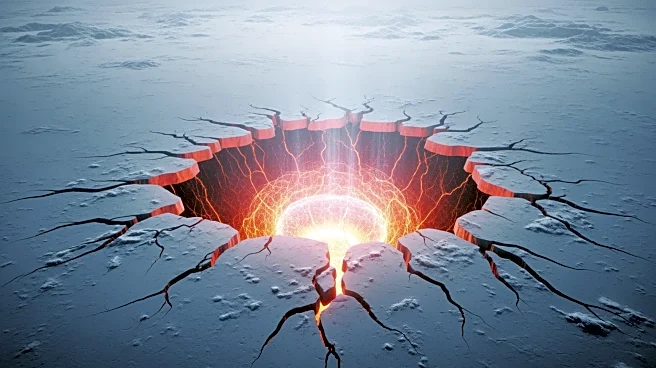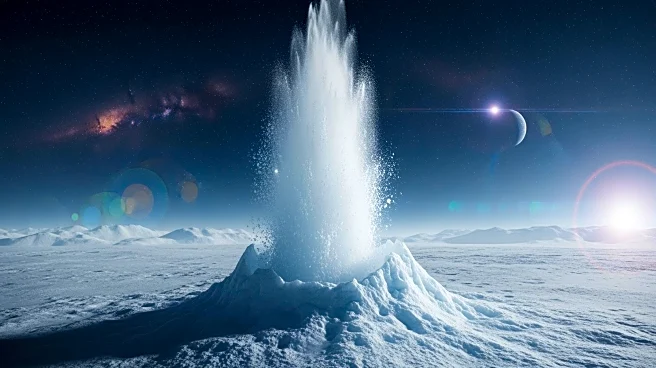What's Happening?
Recent supercomputer simulations conducted by the Texas Advanced Computing Center have provided new insights into the icy moon Enceladus, one of Saturn's moons. These simulations, based on data from NASA's
Cassini spacecraft, have refined estimates of how much ice Enceladus loses to space. The study, led by Arnaud Mahieux from the Royal Belgian Institute for Space Aeronomy, utilized Direct Simulation Monte Carlo (DSMC) models to better understand the structure and behavior of the plumes of water vapor and icy grains expelled from Enceladus's surface. The findings suggest that the mass flow rates from Enceladus are between 20 to 40 percent lower than previously thought, which has implications for future robotic exploration and the potential for life beneath the moon's surface.
Why It's Important?
The significance of these findings lies in their potential impact on future space missions and the search for extraterrestrial life. Enceladus is considered one of the most promising places in the solar system to find life due to its subsurface ocean. The refined estimates of ice loss and plume behavior can help scientists plan more effective missions to explore Enceladus further. Understanding the conditions beneath the moon's surface is crucial for assessing its habitability and the possibility of life existing in its ocean. This research also highlights the role of advanced computing in space exploration, enabling scientists to simulate complex natural phenomena and gain insights that were previously unattainable.
What's Next?
NASA and the European Space Agency are developing mission concepts to revisit Enceladus, aiming to go beyond brief flybys. These plans include landing on the moon's surface and drilling through the ice to sample the underlying ocean, searching for signs of life. By analyzing the plume material, scientists can assess subsurface conditions without penetrating the crust. The advancements in supercomputing are expected to play a crucial role in these missions, providing detailed simulations that can guide exploration strategies and enhance our understanding of Enceladus's potential for life.
Beyond the Headlines
The research on Enceladus not only advances our understanding of this particular moon but also contributes to the broader field of astrobiology. The presence of a subsurface ocean on Enceladus opens up possibilities for similar conditions on other icy moons in the solar system, such as those orbiting Jupiter, Uranus, and Neptune. These findings could lead to a paradigm shift in how scientists approach the search for life beyond Earth, focusing on ocean worlds that lie beyond the solar system's 'snow line.' The study also underscores the importance of international collaboration in space exploration, as missions to Enceladus involve multiple space agencies working together to uncover the mysteries of the universe.











